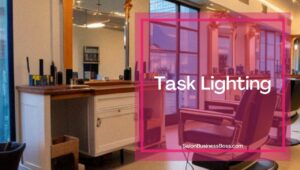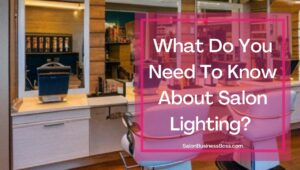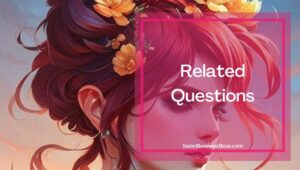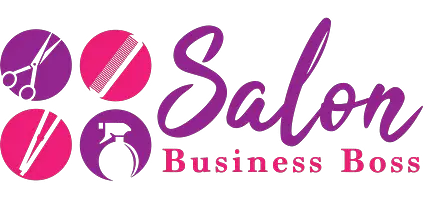Salon owners and hairstylists are responsible for making sure that their customers leave their establishment with a look that perfectly matches their personality. After all, a customer’s signature look is a significant part of their individuality and their identity. In order to accomplish this task, they must ensure that the lighting in their respective salons is perfect. Most salons have made the switch to LED lighting to get the best results. So, what is the best LED lighting setup that a salon owner can buy?
The five best LED lighting solutions that you can purchase for your salon include:
- Ambient Lighting
- Task Lighting
- Accent Lighting
- Vanity Lighting
- Decorative Lighting
In this article, we are going to take a closer look at some of the best LED lighting setups that salon owners can purchase to ensure that their customers get the perfect look, while simultaneously helping their stylists. We will also examine some of the most important things to consider when purchasing an LED lighting system.
Ambient Lighting
Ambient lighting is found in most small businesses such as salons and offices. This type of lighting refers to the main lights in your salon. While ambient lighting may not necessarily be immediately noticed, it is a diffused source of light that illuminates the majority of the space available in a particular area. Ambient lighting is usually created through the use of recessed ceiling lights and dimmer switches.
Task Lighting

Task lighting is perhaps the most specific form of lighting in your hair salon. This type of lighting is frequently found in high-use areas of a salon, or any other business, in which people need to see better to perform specific tasks. One example of task lighting can be seen at coloring stations, where magnifying lamps are commonly used. Another example of an area in a salon where task lighting would be used is at the nail station.
Accent Lighting
Accent lighting is most often used to draw attention to an area or an object in the beauty salon. Because of this reason, these bulbs are typically very bright, and this type of lighting is often referred to as directional lighting. You will normally see examples of accent lighting around certificates of accomplishments, or Illuminating a product case. Accent lighting is an effective tool that is used to sell high-end products at most salons.
Vanity Lighting
This type of lighting can be found all over the beauty salon and is most often used to eliminate shadows. Vanity lighting is commonly found around mirrors and allows clients and stylists to get a better view of the work being done. This type of lighting is most effective in helping stylists with hair and makeup work. The tone of vanity lighting is usually warm, which most salon owners agree is the most flattering tone for clients to see their hair and makeup.
Decorative Lighting
As its name would indicate, decorative lighting is primarily used for decoration. It also allows salon owners to think outside of the box when it comes to decorating their salon. Decorative lighting is also useful for adding a pop of color to your salon. One primary example of decorative lighting that can be found in a salon is wall sconces. Decorative lighting is usually not quite as bright as many of the other forms of lighting found in most hair salons.
What makes a salon high-end? Get the answer here!
What Do You Need To Know About Salon Lighting?

Believe it or not, the lighting in your salon can make the difference between your clients leaving happy and satisfied, or leaving disappointed and frustrated. Lighting plays a significant role in helping hairstylists achieve the perfect look for their clients. With that said, six things should factor into the lighting situation at any reputable hair salon. These factors include:
- The lighting in the salon must complement its interior, while simultaneously flattening the complexion of the client. Use a warmer temperature (2,700 to 3,500 Kelvin) bulb.
- Salon lighting must accurately render hair color. The Color Rendering Index on the package represents the bulb’s ability to accurately render color.
- The positioning of your lighting fixtures should be adjusted to eliminate shadows in your salon.
- Energy-efficient bulbs can provide long-term savings for your salon, resulting in decreased energy bills.
- Use overhead lighting fixtures to provide your stylists with adequate light, while also illuminating your entire salon.
- Make sure that you are using quality lighting in your salon. Saving a small amount of short-term money on lighting will result in disappointed clients and frustrated hairstylists.
Conclusion
Many different forms of light can be found in hair salons across the world. One of the most popular forms of light that are found in these salons is LED lighting. The primary source of lighting in most hair salons is known as ambient lighting. Task lighting is the most specific form of lighting in a hair salon and allows stylists to see what they are doing better. Accent lighting eliminates shadows and draws attention to a specific area of the beauty salon. Most often found around mirrors, vanity lighting allows hairstylists and clients to get a better view of the customer’s new look. Finally, decorative lighting is primarily used to add a pop of color to your salon. When these lights are used in conjunction with each other, they will help your stylists to achieve the look that will light up your clients’ lives.
Related Questions

What is the average monthly utility bill for a hair salon?
There are a few variables that will factor into the answer to this question. A few of these factors include the size of the salon, the area in which the salon is located, and how many hairstylists work at the salon. A salon’s monthly utility bill can be as low as $30 per month, or as high as $300 per month. The average electric bill for a hair salon is approximately $150 per month, while the average water bill for a hair salon is roughly $75 per month.
How much does it cost to start a hair salon?
The cost to start up a hair salon will depend on how big the salon is, and whether or not your goal is to open a high-end salon. It can cost as little as $62,000 to open a hair salon, with some of the more extravagant and high-end salons costing over $500,000 to start. A few of the things that factored into the start-up cost of a salon include licenses and permits: payroll expenses, salon equipment, real estate, insurance, and inventory on hand.
Looking to start your own Salon? Get the documents you need to get organized and funded here.
Please note: This blog post is for educational purposes only and does not constitute legal advice. Please consult a legal expert to address your specific needs.

About the author. Entrepreneur and Salon Business Fan.
Hi! I am Shawn and I am a happy individual who happens to be an entrepreneur. I have owned several types of businesses in my life from a coffee shop to an import and export business to an online review business plus a few more and now I create online salon business resources for those interested in starting new ventures. It’s demanding work but I love it. I do it for those passionate about their business and their goals. That’s why when I meet a salon business owner, I see myself. I know how hard the struggle is to retain clients, find good employees and keep the business growing all while trying to stay competitive.
That’s why I created Salon Business Boss: I want to help salon business owners like you build a thriving business that brings you endless joy and supports your ideal lifestyle.

